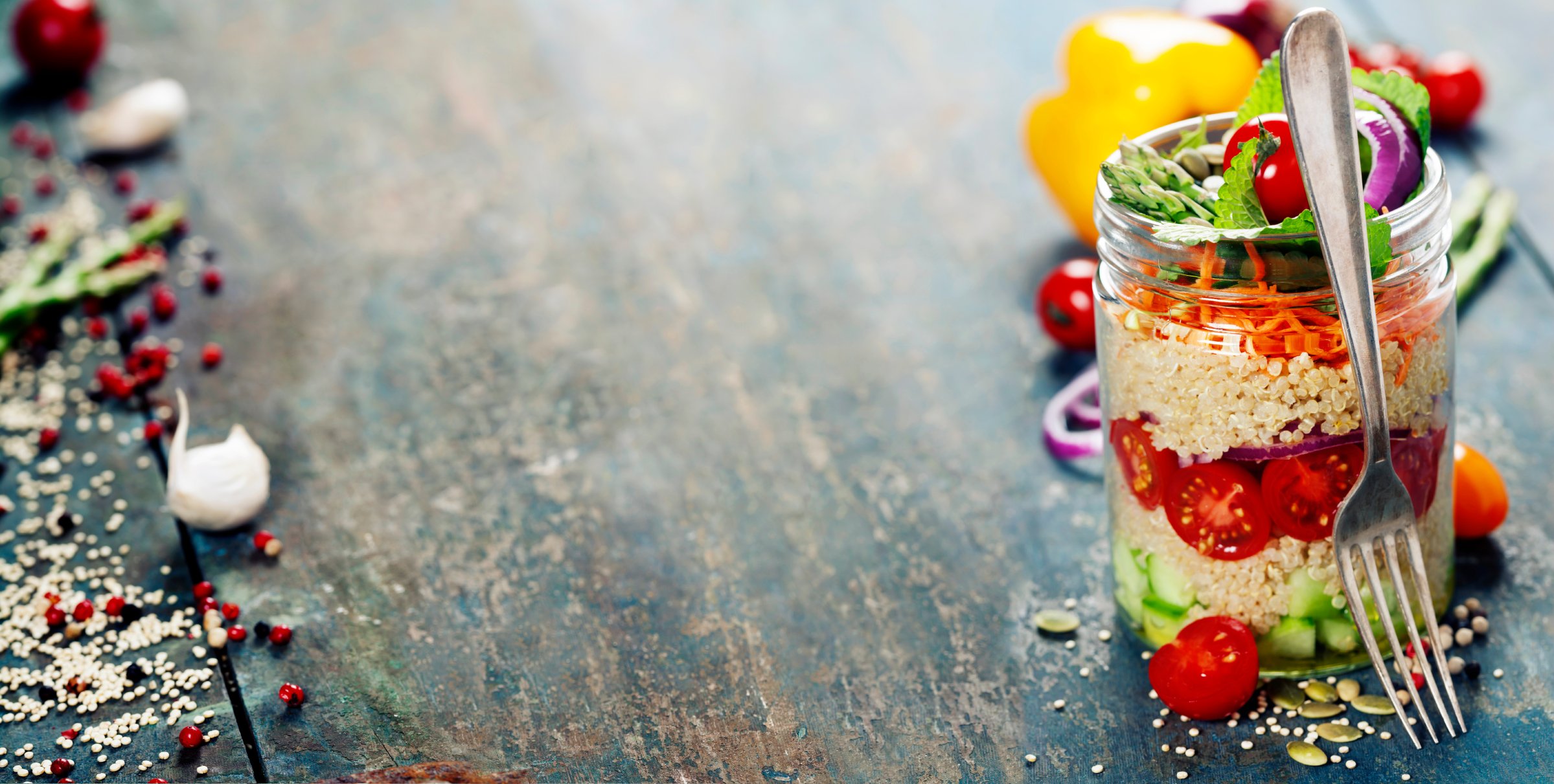
In January many of my clients are focused on shedding holiday pounds. But others see the New Year as a chance to establish healthy (and sustainable) eating habits for reasons other than weight loss. These folks are driven by goals like more energy, stronger immunity, improved strength and endurance, and better digestive health, sleep, or mood. Some are even driven by the beauty benefits of a clean diet, such as smoother skin and glossy hair.
I’ve found that people with these types of quality-of-life motivations are more likely to stay on track throughout the year, even if they don’t see a steady drop on the scale. If you are in a similar boat, I recommend the four simple resolutions below, to help making eating healthy your new normal in the months ahead.
Stock up on ingredients for quick, balanced meals
When hunger strikes, if you don’t have a healthy option on hand, it’s all too easy to gorge on anything that’s readily available. Many clients tell me they wind up eating things like their kids’ mac and cheese or pizza, when they haven’t planned their meals in advance.
While prepping healthy options may seem like a pain, you can actually make the process pretty simple by choosing a few go-to meals, and stocking up on their ingredients. For example, always keep a container of leafy greens in the fridge as the base of a meal. You can top it with canned wild salmon (seasoned with Dijon, balsamic vinegar, and Italian seasoning), a few hard-boiled eggs, a scoop of lentils, or a handful of pre-cooked frozen shrimp (thawed by rinsing under cold water).
Add a healthy fat, like avocado, or a jarred option, like olive tapenade or an EVOO-based pesto. For a good carb, toss in fruit (like a sliced apple, pear, or thawed frozen berries), a small scoop of pulses (canned chickpeas or lentils), or a whole grain like pre-cooked quinoa. You can also leave the starch out of the dish and munch on popcorn afterward instead.
These meals made from clever shortcuts can be prepared in minutes. And when you have the components on hand, it’s much easier to resist a less healthy option.
Read More: How to Build a Healthy Meal That Actually Keeps You Full
Identify healthy take-out options
We all have days when we just cannot carve out time to put together even a quick meal. But if you’re going to order in, it doesn’t have to be pad Thai or a mega burrito. Instead, choose three solid options in advance, and alternate.
One good choice is a taco salad (without the fried shell) topped with grilled veggies, and either chicken, seafood, or black beans for protein; plus salsa or pico de gallo and guacamole as your dressing.
Another healthy choice is sashimi, paired with seaweed salad or a side salad with ginger dressing, and sides of brown rice and avocado. And you can’t go wrong with a Mediterranean platter (skip the free pita) of salad dressed with tahini or EVOO vinaigrette, lentil soup or kabobs of chicken or seafood, and a side of hummus. Scope out where you can find these meals in your delivery zone now, so you’ll know who to call on your next crazy-busy day.
Adopt a strategy for sweets and booze
The two things that most often derail my clients from a healthy eating routine are drinking alcohol and unplanned sweet or savory splurges (like a cupcake or potato chips). I don’t believe it’s realistic to never have these extras. However, I think the best approach is to determine how and when you’ll include them in your diet in advance.
For example, some of my clients eat clean, healthy meals Monday through Friday, then indulge on weekends. Others choose two days during the week when they’re going to indulge, based on their social plans.
Regardless of which approach works for you, having a concrete plan makes it a lot easier to pass up temptations. In other words, if you know you’re going to dinner Thursday night and will be splitting molten lava cake with a friend, you’ll be less tempted by M&Ms at the office.
Read More: We Did Gwyneth Paltrow’s 2017 Goop Detox and Now We Are Very Hungry
Take five minutes a day to meditate
Now, you may be wondering what meditation has to do with healthy eating. The answer is everything.
When I take many of my clients through guided mediation, followed by instruction on mindful eating, the impact is immediate. When you clear your head, and stay present in the here and now, eating becomes a much different experience.
Spending just five short minutes a day meditating can help you better tune in to your body’s hunger and fullness signals; eat with more awareness, at a slower pace; and lead you to make more thoughtful decisions about food. This change alone has the power to end patterns of under or overeating, and help you naturally eat in a way that optimizes wellness.
This article originally appeared on Health.com
More Must-Reads from TIME
- Breaking Down the 2024 Election Calendar
- How Nayib Bukele’s ‘Iron Fist’ Has Transformed El Salvador
- What if Ultra-Processed Foods Aren’t as Bad as You Think?
- How Ukraine Beat Russia in the Battle of the Black Sea
- Long COVID Looks Different in Kids
- How Project 2025 Would Jeopardize Americans’ Health
- What a $129 Frying Pan Says About America’s Eating Habits
- The 32 Most Anticipated Books of Fall 2024
Contact us at letters@time.com